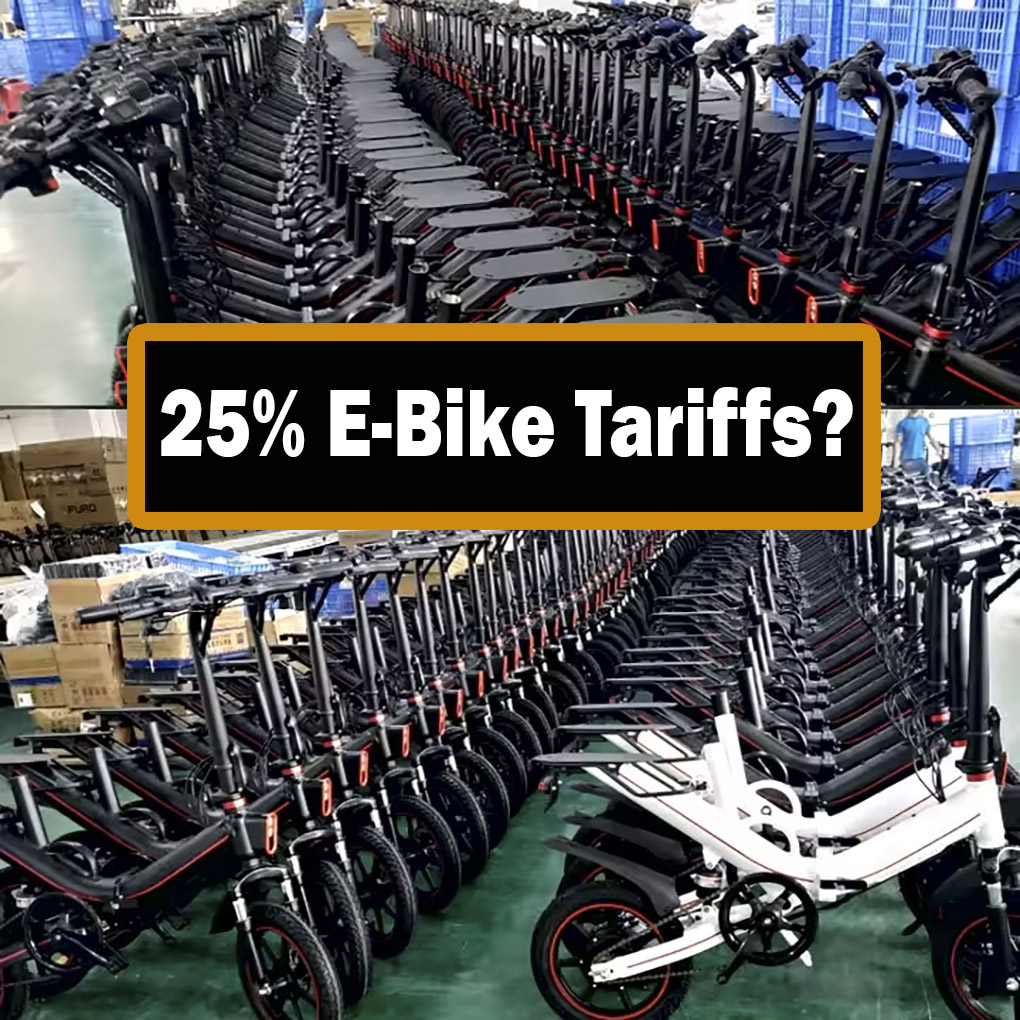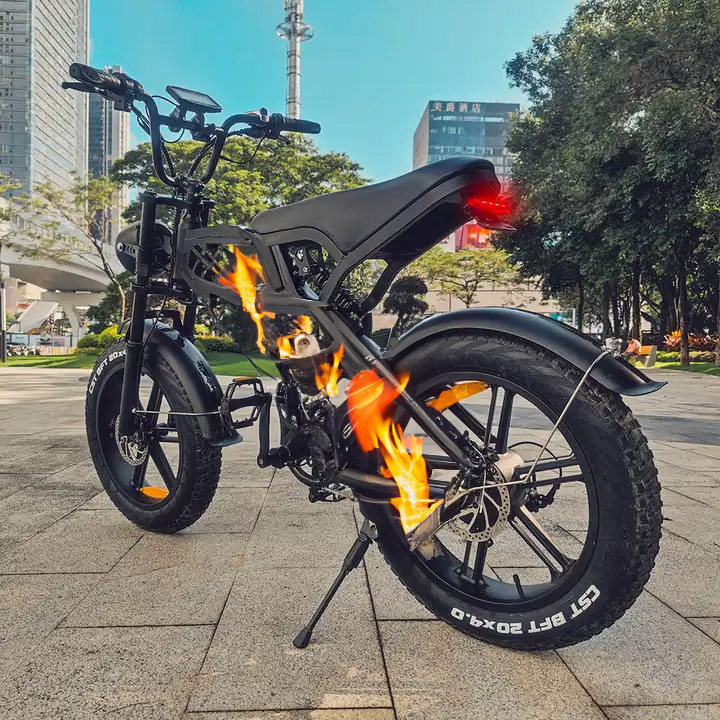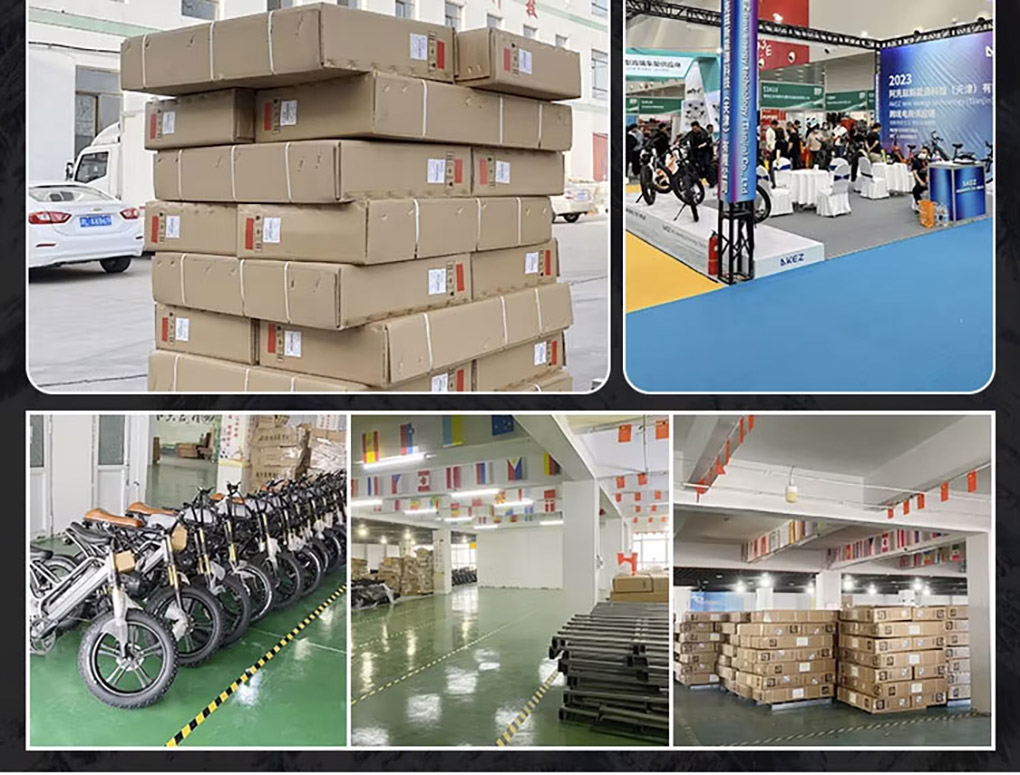
Get Ready for Higher E-Bike Tariffs

As of the latest updates in June 2024, the status of tariffs on electric bikes (e-bikes) in the United States has been evolving. Here’s a summary of the key points:
1. Tariffs on Chinese E-Bikes
- Background: The U.S. imposed tariffs on Chinese imports, including e-bikes, as part of the trade tensions between the U.S. and China, particularly starting in 2018. These tariffs were initially set at 25% on a wide range of goods from China, including electric bicycles.
- Recent Developments: In 2022, there were temporary suspensions or exemptions for certain e-bike imports, but the overall tariff structure remained in place. These tariffs have been controversial in the cycling community, as they have raised prices for both e-bikes and related components in the U.S.
2. Advocacy and Petitioning to Exempt E-Bikes
- E-bike industry groups, such as the PeopleForBikes organization, have been actively advocating for tariff relief, arguing that the tariffs disproportionately affect consumers and small businesses.
- In 2022, these efforts led to some temporary tariff exclusions on e-bikes, but these exemptions were not permanent and have often been extended only after significant lobbying.
3. Current Situation (2024)
-
The Biden Administration has shown signs of reevaluating the effectiveness of these tariffs, especially as the U.S. electric bike market continues to grow.
-
Tariff Rate Adjustments: As of now, the 25% tariff on Chinese-made e-bikes is still in effect, though some industry insiders are hopeful that the Biden Administration could reduce or eliminate these tariffs in the future. There have been ongoing discussions within the U.S. Trade Representative’s office regarding the potential for tariff reductions for certain categories of e-bikes or bicycle components.
-
Impact on E-Bike Prices: These tariffs have led to higher prices for e-bikes in the U.S. market, which has made them less affordable for many consumers. In addition, manufacturers have had to either absorb some of the costs or pass them on to consumers, which has been a challenge for smaller e-bike brands and retailers.
4. Shift in Supply Chains
- Due to the tariffs, many e-bike companies have started to look for alternative manufacturing sources outside of China. Countries like Vietnam, Thailand, and Cambodia are seeing a rise in e-bike production, as manufacturers attempt to circumvent the high U.S. tariffs on Chinese imports. However, these shifts in supply chains come with their own challenges, including higher production costs and longer shipping times.
5. E-Bike Components and Accessories
- Many e-bike components, such as batteries, motors, and other electrical components, are also subject to tariffs. The overall cost of building an e-bike in the U.S. has increased because many of these parts are still sourced from China or other countries affected by tariffs. Some companies are exploring options to manufacture more of these components domestically or in tariff-free countries, but that is still a work in progress.
6. Potential for Future Changes
- Tariff Review and Negotiations: The U.S. government periodically reviews and adjusts tariffs, and there have been discussions about revisiting tariffs on products like e-bikes in light of their growing popularity and the importance of sustainability. However, it’s unclear whether significant changes will occur soon.
In summary, while tariffs on Chinese e-bikes are still in place, there are ongoing efforts by industry groups to reduce or eliminate them. The impact on e-bike prices continues to be felt, and manufacturers are seeking alternative supply chains to mitigate these costs. Keep an eye on any updates from the U.S. Trade Representative’s office for potential changes in the near future.
Recent Posts


California Adds New Bill to Make E-Bikes Safer for All

Get Ready for Higher E-Bike Tariffs

Can You Get a DUI While Riding On an E-Bike?

The Dangers of E-Bike Fires: Fact or Fiction?


